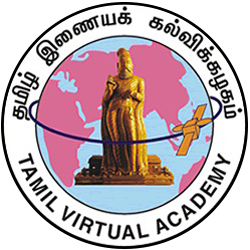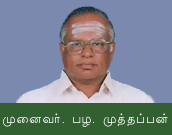Primary tabs
-
p20214 Lesson 4 Religious Doctrines - Rituals of Worship
This lesson speaks of religious doctrines and principles with special emphasis on saiva siddantam. It also discusses the rituals of worship associated with saivism. The scriptures of saivism are called Saiva Agamams. There are 28 Agamams. It is believed that the Agamams were revealed to the sages by Lord Shiva Himself. The agamas are the source of the saivaite philosophy. They enunciate the attributes of Shiva- the Supreme Being. They expound the practical aspects of religion such as the various forms of worship, the nature and conduct of the devotee, places of worship and rituals of worship. Saiva Siddanta texts and Saiva Thirumuraigal have attempted to simplify and distill the essence of the agamas so as to make them available to everyone. ‘Thirumanthiram’ which is one of the saiva thirumuraigal is one such text. Saiva temples and modes of worship in Tamilnadu are along the agamic lines explained in the ‘Thirumanthiram’.
The saiva siddanta outlines 4 ways or paths of liberation: Dasa Margam, Sarputhira Margam, Saga Margam and San Margam. They are also known as ‘Sariyai’, ‘Kriyai’ ‘Yogam’ and ‘Gnanam’. The devotees of Shiva can attain His feet by following one of these paths. The Dasa Marga advocates the path of service to reach God. One can reach Shiva by offering one’s services in His temple and by serving His devotees. Through dasa margam the devotee attains Salokya mukti or the fortune of being close to the place of Shiva. Sarputhira Marga or Kriya Marga enunciates that one can reach Shiva by performing appropriate rituals and by reciting the mantras. The devotee who practises Kriya Marga is granted ‘Samipya Mukti’ or nearness to God. Saga Margam or Yoga Margam advocates the practice of yoga and meditation to reach Shiva. Saga Margam enables the devotee to attain the likeness of God or ‘Sarupya Mukti’. Sanmargam or Gnana Padam is the path of wisdom. In this, the devotee attains Sayuja Mukti or union with God through spiritual awakening.
The worship of the Lingam is integral to Saivism. Saivism upholds the belief that Shiva, the Primal Being has a form and is also formless. The Lingam embodies this belief.
Shiva temples are built on the basis of the architectural principles propounded in the ‘Thirumanthiram’. It compares the structure of the temple to the human body.
Saivism upholds idol worship. Hence Shiva is worshipped in various forms in temples dedicated to Him. Inside Shiva temples one also finds the idols of minor deities associated with saivism. It is believed that all the minor deities are a manifestation of Shiva who is the Supreme Being.
The concept of Guru or Preceptor is central to saivism. Saivism advocates Guru Vazhipaadu or the worship of the preceptor. The devotee can attain the sacred feet of Shiva only through the Guru. Saivism also emphasizes ‘Sangama Vazhipadu’ or the veneration of the Sivan Adiyaars. The rudraakshaa beads and the sacred ash are considered to be the most important symbols of Saivism.


